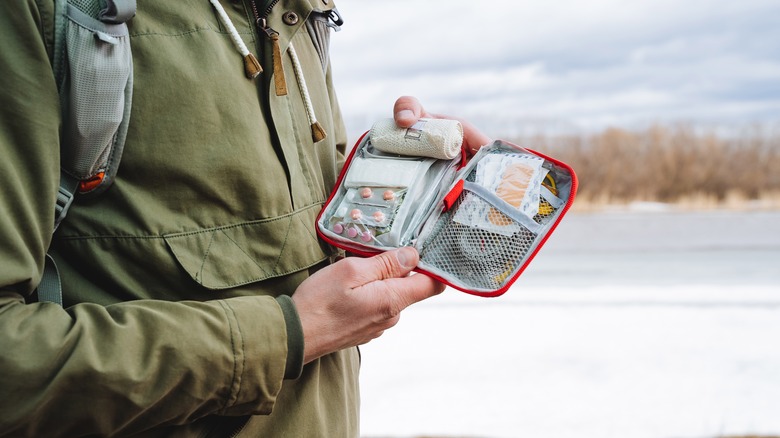How To Call For Help When Hiking In An Area With No Service
Hiking is a wonderful activity that is good for the body and mind. However, because the basis of many hiking trips involves heading out into mountainous regions or remote areas, hikers often end up in locations with little to no cell service. Most of the time, this lack of service is merely annoying. However, it becomes a problem when you experience an emergency but don't have any bars to call for help. Although none of us ever want to (and hopefully never will) experience a situation like this, it is important to be prepared and know what you will do if it ever happens to you. So, how can you call for help if you are hiking in an area with no cell service?
The good news is that despite having no service, you still may be able to call 911 because emergency calls can connect through any network. This means that even if you are in an area not covered by your service provider, if it is covered by any service provider, your call will still connect. That's why sometimes when you are in an area with no bars, your phone may still say "SOS" or "emergency calls only." Furthermore, even if there is not enough signal to get a call through, you may still be able to text 911 or a family member because messages get through more easily than calls in areas with spotty service.
How to call for help if your phone is dead or broken
If your phone is dead or broken, you still may be able to call for help using the phone of your hiking partner. If a phone is available to you, even if you don't know the passcode, you can still call 911 by swiping up on the lock screen and pressing the "emergency" or "emergency call" option. If this doesn't work because there is really no service in the area, you will need to send an uninjured person back to the trailhead for help.
If you are completely without service and lost or are hiking alone and immobilized, you'll have to get a little old-school. You can start by blowing an emergency whistle. Many backpacks come with whistles built into the chest clip and they are a good way to draw attention. Also, the piercing sound of a whistle can travel long distances with some of the best emergency whistles capable of carrying for a couple of miles on a clear calm day. If you don't have a whistle, you can also try shouting.
If these methods don't work, you can also try using a mirror (if the sun is out) or a flashlight (at night) to signal SOS in Morse code. SOS in Morse code is easy to remember and is three short pulses, followed by three long, and then three short.
Always hike prepared with proper emergency equipment
If you know you will be heading to a remote area with little or no service, it is important to prepare by bringing the necessary equipment. While flares may be the first thing that comes to mind when thinking about emergency signals, today, most hikers choose not to carry them because they are heavy and not guaranteed to work. Instead, go for more modern devices like personal locator beacons because, once they've been registered, they allow the user to send out a distress signal using satellites that will lead emergency teams to your exact location. Also, PLB devices don't require a monthly service fee or subscription like satellite phones.
However, the best way to make sure you get help in emergencies during your hiking trip, as outlined in a Quora post by an experienced climber and hiker, is to make sure someone else (maybe a close friend or relative) knows all the details of your plan. Before leaving for any hike in a no-service zone, you should let another person know the times you expect to leave and return, your route, and when you plan to check in with them to confirm that everything went as planned. This way, if you miss a check-in because of an emergency, your contact person can immediately investigate and contact emergency services on your behalf.


